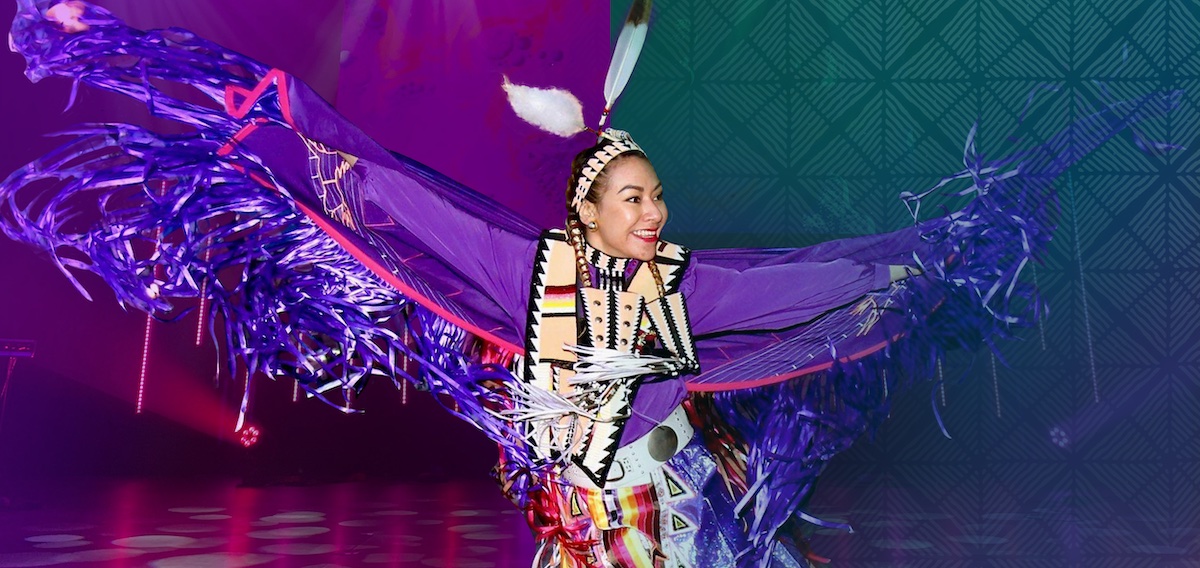
- Details
- By Chez Oxendine
- Arts and Culture
WASHINGTON — Native arts nonprofit First Peoples Fund takes the stage this weekend at the John F. Kennedy Center for the Performing Arts for “We The Peoples Before,” a three-day celebration of the culture bearers that help share and preserve Native art and language.
The stage production at the festival’s center features nearly 50 Native storytellers, poets, spoken word artists, musicians, language speakers, and dancers, all aimed at honoring Native culture, says Production Director Roberta Uno.
“It really gets to the heart of the work that First Peoples Fund does,” Uno said. “It really lets Natives tell their own stories and share their perspective with the world. It’s such an important piece.”
The stage production, scheduled for 8 p.m. EDT, Saturday, July 2 at the Kennedy Center in Washington, D.C., will be live streamed via the event’s Facebook page. “We The Peoples Before” will also host a range of panels, discussions, and smaller performances.
Importantly, the event also will serve as the official kick-off for the Collective Spirit Legacy Fund, which aims to raise $15 million to support First Peoples Fund’s next 25 years of work.
“There’s a lack of funding for Native creators. FPF has been very successful in really tapping into traditional philanthropic circles of big funders and really exposing them to and teaching them about Native artforms and cultures,” said First Peoples Fund Vice President Sonya Paul Gavin. “The purpose of our legacy fund is to grow our funding base, and increase the impact of the work that we do.”
First Peoples Fund (FPF) hopes to raise $15 million for the Collective Spirit Legacy Fund to support three primary goals: expanding its central grant program, investing in other organizations that could help Native creators, and building a reserve fund to keep their programs going through economic shocks or emergencies.
By broadening its funding base under the Collective Spirit umbrella, First Peoples Fund can “continue to grow our programs and get money to other communities,” Gavin told Tribal Business News.
“One thing FPF does is try to broaden that philanthropic circle and funding opportunities to understand Indian Country,” Gavin said. “We’ve done some outreach and we’re hoping our funding partners bring their partners with them, to bear witness to why they support us. We’re really targeting both new support and existing supporters, to talk about First Peoples Fund and the work that we’re doing.”
“We the Peoples Before” enables First Peoples Fund to carry that message to a large audience by way of one of the largest performance centers in the country, a stage where Natives are long overdue, Gavin said.
“We are partnering with the Kennedy Center and really showing that Native people belong in venues like that. It’s not just reserved for the opera and symphony, and it’s really recognizing our rightful place in those venues,” Gavin said. “This should not be the only time that the Kennedy Center hosts and really allows Native, Indigenous peoples to be there.”
‘Core to what we do’
The new Collective Spirit Legacy Fund will support the growth of programs like First Peoples Fund’s Jennifer Easton Community Spirit Awards, which offers annual grants to bolster selected creators’ work.
First Peoples Fund has granted more than 100 awards so far to storytellers, carvers, musicians, and other creators across a variety of mediums. Awards initially began at $5,000, but have since grown to $25,000 this year, Gavin said.
“We’re trying to reach more artists through those awards and expand the amount of funding available to them,” Gavin said. “That’s core to what we do.”
The organization’s plan to improve community outreach includes investing in organizations like Native community development financial institutions (CDFIs), heritage centers, youth organizations and community development corporations, Gavin said.
In turn, those investments will support new jobs and eventually business creation as artists gather more resources.
“More people will be able to pass on ancestral knowledge and to help strengthen the spiritual well-being of their communities while also creating jobs and business opportunities,” Gavin said. “We will deepen our community-based programming to create positive environments for knowledge-sharing and artistic expression in more Native communities.”
First Peoples Fund’s fundraising work has taken on even greater importance in light of the organization’s research on art philanthropy and support.
The organization found that Native creators needed broader access to funding and more freedom in their partnerships with funders, as Tribal Business News previously reported.
Creators said traditional foundational support needed more diverse voices at the decision-making level and a better understanding of Native culture and production processes.
First Peoples Fund has had some success in that arena, Gavin said.
“We have big supporters like the Ford Foundation and others,” Gavin said. “It’s been a long process of educating them and talking to them about the work being done in communities and the work that’s being done to lift up the culture bearers.”
This weekend’s production celebrates that work, and looks toward continuing it in the future, Gavin said.
“We are using this as an opportunity to try to educate the public about the breadth and depth of Native cultures,” Gavin said. “It’s an opportunity to look deeper into our traditions and artforms, the meanings behind them, and their lifeways, and the way we’re supposed to be living in this world.”
